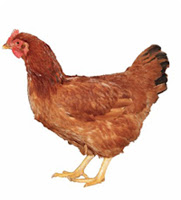Feed And Space Requirement For Layers
Feed and space are important requirements that should be properly checked for profitable egg production. Some of the expectations of layer farmers are high efficiency of at least 75%, big and healthy eggs on daily basis. All these can be disrupted by inadequate feed and space per bird. Although there are other factors like Biosecurity, Medication and Vaccination Schedule contributing to optimum performance of layers, but space and feed requirements cannot be neglected.
Feed Requirement
There three types of feed for layers depending on their age and nature. These are Starter, Grower and Layer feeds. Starter feed is given for the first 8 weeks and a chick will need at least 1.2 kg of the feed at this stage.
Grower Mash is given to the birds between 8 to 20 week of age or until when 5 to 10% of the birds started laying. They need at least 5.2 kg of feed at this level. A bird is expected to weigh at least 1.5 kg at this stage.
Layers Mash is introduced to the birds when 5-10% of the birds have started laying. They are being served with this feed until the birds are sold. A laying bird will need about 115g of the feed per day of laying period. Read more on Types Of Poultry Feed.
There three types of feed for layers depending on their age and nature. These are Starter, Grower and Layer feeds. Starter feed is given for the first 8 weeks and a chick will need at least 1.2 kg of the feed at this stage.
Grower Mash is given to the birds between 8 to 20 week of age or until when 5 to 10% of the birds started laying. They need at least 5.2 kg of feed at this level. A bird is expected to weigh at least 1.5 kg at this stage.
Layers Mash is introduced to the birds when 5-10% of the birds have started laying. They are being served with this feed until the birds are sold. A laying bird will need about 115g of the feed per day of laying period. Read more on Types Of Poultry Feed.
Space Requirement
The space required by birds can be determined based on the age of the birds and Housing System used. A chick may require as small as 0.5 sqft and 1 sqft for growing bird. A laying bird requires about 2 sqft per birds while it is just around 0.47 sqft in cage system. Overcrowding can lead to heat stress, pecking (cannibalism) and Egg Dropping Syndrome.
Either cage or deep litter system is used, adequate number of feeder and water drinker must be supplied. A 6ft feeder is okay for 30 layers or 18 inch diameter circular feeder of 4-5 in number should be enough for every 100 laying birds. Poultry farmer need to provide two 18 inch diameter plastic waterer for every 100 birds.
Apart from proper medication and vaccination program, the following procedures should be exercised:
The space required by birds can be determined based on the age of the birds and Housing System used. A chick may require as small as 0.5 sqft and 1 sqft for growing bird. A laying bird requires about 2 sqft per birds while it is just around 0.47 sqft in cage system. Overcrowding can lead to heat stress, pecking (cannibalism) and Egg Dropping Syndrome.
Either cage or deep litter system is used, adequate number of feeder and water drinker must be supplied. A 6ft feeder is okay for 30 layers or 18 inch diameter circular feeder of 4-5 in number should be enough for every 100 laying birds. Poultry farmer need to provide two 18 inch diameter plastic waterer for every 100 birds.
Apart from proper medication and vaccination program, the following procedures should be exercised:
1.) The birds need at least 16 hours light during laying period.
2.) Deworming should be done regularly at an interval of 6-8 weeks depending on the worm load, especially when reared in deep litter system.
3.) Eggs need to be collected at least 5 times a day in deep litter system and twice a day in cage system.
4.) Cull the unproductive layers regularly.
5.) More feeds should be given when required, especially during cold period. In short, feed must be Optimized Effectively by birds.
2.) Deworming should be done regularly at an interval of 6-8 weeks depending on the worm load, especially when reared in deep litter system.
3.) Eggs need to be collected at least 5 times a day in deep litter system and twice a day in cage system.
4.) Cull the unproductive layers regularly.
5.) More feeds should be given when required, especially during cold period. In short, feed must be Optimized Effectively by birds.
You may also read... Medication And Vaccination Schedule For Noilers.
For quick updates and comments, follow us on our social media connects; FacebookPage, TwitterHandle and Instagram. You can also subscribe and watch videos on our YouTube channel. At Artib Farm, we materialize your satisfaction!




Comments
Post a Comment